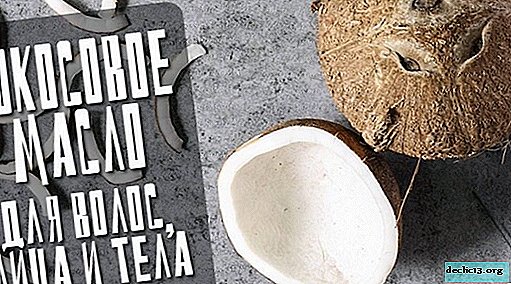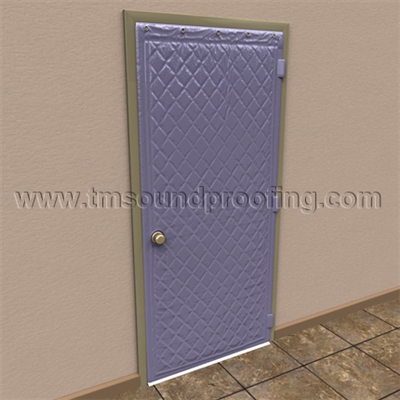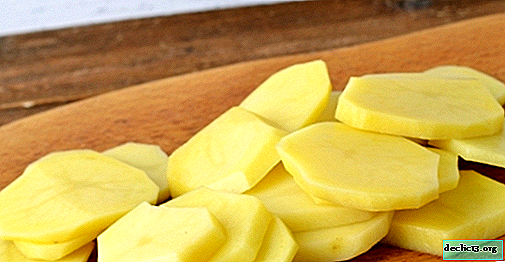Amber Fort - The Pearl of Rajasthan in India
Amber Fort is a famous palace complex, consisting of many castles, temples, gardens and pavilions, the construction of which took almost 2 centuries. The appearance of this building is very mixed. On the one hand - impregnable fortress walls, on the other - a real oriental oasis with marvelous arches, ancient mosaics, mirrors, fountains and an intricate labyrinth of passages that hide a great many secrets.

General information
Amber (India) is a magnificent building, towering on a rocky cliff 11 km from Jaipur, the capital of the Indian state of Rajasthan. Its history began in 1592 with the construction of a conventional defensive bastion, designed to protect the Dhundhar principality from enemy attacks. The work on this truly grandiose project was initiated by the Raja Man Singh I, but he still failed to enjoy the results of his work - the famous military commander died long before its completion.
For the construction of the fort, which remained the administrative center of these parts until the foundation of Jaipur, local sandstone was used. Walls made of this light yellow rock almost merged with the panorama surrounding them. The effect was so strong that it is almost impossible to see Amber from afar. This decision was not accidental - with frequent military attacks, it played a huge defensive role.

By the way, precisely because of this material, many guides claim that the name of the palace comes from the English word "amber" - "amber". But, despite the fact that at the pre-sunset hour the walls of the fortress really acquire an orange tint, this is far from the case. In fact, the fort is named after the Indian goddess Amba, also known as Durga.
Curiously, the fortified settlements on this site existed another 1000 years before the events described I. When they laid the main road to Delhi past them, strengthening the approaches to the Dhundharov residence became a strategically important task. Moreover, the local Rajah was so much afraid of the troops of the Delhi Sultanate that next to Amber another fortress was built, connected to it by numerous underground tunnels. Together with Amber, it forms a powerful defensive structure, the walls of which extend along the mountain hills for almost 20 km. For such an impressive size, locals often call it the "Great Indian Wall", hinting at a resemblance to a famous Chinese landmark.

The work on the fort was completed by Jai Singh I, who became the successor to the previous Raja. It was under him that Amber Fort in Jaipur turned into a beautiful palace complex with 4 separate courtyards, man-made Lake Maota, magnificent mosques and gardens. And even despite the fact that after the entire princely court moved to another city, the bastion began to decline, for many years it continued to remain the most important fortification of Rajasthan.
Today, Amber Palace is included in the "Golden Triangle of India" and is one of the most visited attractions in the country. In 2013, it was inscribed on the UNESCO World Heritage List.
The structure and architecture of the palace
Despite the long history of its existence, Amber Fort (Jaipur, India) continues to be the brightest demonstration of the beauty and luxury that medieval Indian Rajas surrounded themselves with.

Created in the best traditions of the Rajput architectural style, which at that time was at the peak of its development, it is characterized by strict forms and perfectly proportional lines. However, the simplicity inherent in the external walls hides a rich interior decoration and various decorations, inaccessible to the common man.
The internal buildings of the fortress are complemented by beautiful balconies, miniature gazebos arranged at the corners of roofs and awnings, arched columns made of white marble and barred windows providing an influx of fresh air.
Fort structure features
Like other structures built during the Rajput period, Amber has several characteristic features. If the central part of the complex was occupied by prasada, the main residential building, consisting of several tiers, outbuildings and pavilions, then the rest of the citadel is divided into 3 different parts. The first is zenana, women's rooms with open terraces and mini-parks. The second - courtyards with personal royal chambers, a palace forum and a study. Well, the third is the service yard, which housed stalls, warehouses and armory.
Gates, courtyards and rooms of the complexThe path to the fort begins on the shores of Maota, a small artificial lake, in the center of which is located the picturesque Dalararama Garden. Having overcome a short stretch of the path, visitors to the complex will find themselves in front of Jai Paul, the central entrance gate. By the way, another path leads to them. We are talking about a stone staircase with unusually high steps, which in ancient times were used by Indian horsemen.

Having passed a large patio following the first gate, tourists find themselves in front of Suraj Paul or the Gate of the Sun. They open Jaleb Chowk, the same household courtyard with barracks, barns, barns and other service buildings. Following him, you can see the Gates of the Moon or Chandra Paul, leading to two shrines - Jagat Shiromani and Narasingha.
Next are Singh Paul or the Lion's Gate, through which you can go to Divan-i-Am, a pavilion for business meetings and personal audiences, the vaults of which are supported by four dozen columns. Some of them are made of marble, others of orange sandstone. Curiously, the upper part of these pilasters is in the form of elephants with their trunks raised up. It is they who play the role of a support for the ceiling. Divan-i-Am ends with a small open veranda framed by a beautiful decorative lattice.
The next gates of Amber Fort (Rajasthan, India) are Ganesha Paul, guarding the entrance to a cozy courtyard with private Raja apartments. In the old days, access to this part of the palace was restricted to members of the royal family and their servants.

If you look to the right, you can see the marble palace of Sukh Nivas, the carved doors of which are decorated with sandalwood and ivory. The building of this castle is cooled by water, which flows along a channel laid directly on the floor and flows in char bugs, a small Islamic garden. In the immediate vicinity of this place is Jai Nivas, another castle, within the walls of which there are many amazing objects.
Among them, the most noteworthy are Yash Mandir (Hall of Fame), Shish Mahal (Mirror Room) and Divan-i-Khas. The walls and semicircular ceilings of the first two are decorated with a huge number of broken mirrors, gilded tiles and pieces of glass. All these elements are folded into a unique pattern, creating the effect of a starry sky, even with a single lit candle. As for the second, its ceilings are decorated with embossed floral ornaments, a border created from semiprecious stones, all kinds of patterns and inlays made from ancient colored mosaics.
 Mirror room
Mirror roomAlmost under the very roof of Jai Nivas, a special platform has been equipped, on which meetings of the yard were held with the advent of cold weather. The last element of Amber Fort is Zenana, a complex maze in the rooms of which only the female half lived. Staying in this part of the complex, one involuntarily senses the presence of mahrani (queens) and kumari (princesses), who led such a calm and solitary lifestyle that they could be detected only by a quiet chime of anklets.
The numerous galleries and flat roofs of the palace, which are also used for promenades, offer beautiful views of ancient citadels, impregnable mountain peaks, defensive towers and calm waters of Lake Maota, stretching somewhere far below.
Practical information
- Amber Castle, located at Devisinghpura, Amer, Jaipur 302001, India.
- It is open daily from 08:00 to 17:30.
- The cost of visiting is about $ 7, but if you come here in the evening, then you pay only $ 1.5 for entry.

It should also be noted that with the sunset on the territory of Amber, sound and light shows are organized, during which visitors are introduced to the history of the fort and the significant events of Rajasthan. A ticket for an English-language performance costs up to $ 3, in Hindi - 2 times cheaper. Such an event lasts about an hour.
On a note! Those who are planning to spend at least a week in Jaipur are advised to purchase a comprehensive ticket for which you can visit not only this fortress, but also 3 palace complexes, the ancient Jantar Mantar Observatory and the Albert Hall Museum of Culture and History.
Useful Tips
Going to Amber Fort, take note of a few important tips:
- If you are going to climb the complex on an elephant, we recommend that you come straight to the opening. Firstly, a huge queue is being built for this “mode of transport”, and secondly, the number of elephants is limited, so there may simply not be enough for everyone who wants it. In addition, each animal is able to make only 4 trips, after which they are sent to rest until the next day.
- You can get into the fort by car, but because of one-way traffic there is a high probability of not missing a cow that has got in the way. Of course, you will still get to the main attraction of Rajasthan, but it may take a little longer than you expected.
- Tipping in India is customary to give to everyone - from waiters to porters and maids. Fort workers, snake charmers, photographers, drovers, etc., will also expect a small reward. The latter receive 100 rupees from each animal.
- At the entrance to the fortress you will probably be offered to buy some kind of souvenir (usually one or several elephants at once). Do not rush to agree - at the exit the same product will cost much cheaper.
- In general, one should be careful with street vendors in Amber. If you do not plan to buy anything, let yourself look as distant as possible and try not to even meet their gaze. It is worthwhile to enter into a conversation with at least one of such dealers, as others immediately catch up with him. This company will accompany you until you land on an elephant, and if you still agree to buy something, you will also get confused under his feet.
- Do not forget to bring a light snack and water. It will take at least 4 hours to inspect the entire territory, and the air temperature in India rarely drops below + 30 ° С.
- Another feature of the fort are local photographers. They click tourists throughout the climb, and then offer to buy these pictures for $ 8-9 (in the album there are 15 pieces, but it’s better to count them). But do not grab the first available sentence. First, look for photos taken from the highest points (they have very beautiful views), and then bargain well.
- Other tourists will be a free alternative to local photographers. Arrange with those who are driving in front and behind you, and then share pictures by email.
- Walking around Amber Fort in India is best with a professional guide. There are so many loopholes, rooms and corridors that without it you will definitely miss something.
- Arriving in Jaipur in December-January, get ready for the fact that all morning photos will have a gray haze. This is nothing but smog mixed with smog. The reason for their appearance is the strong differences in day and night temperatures.


Drive to Amber Fort by car:

















